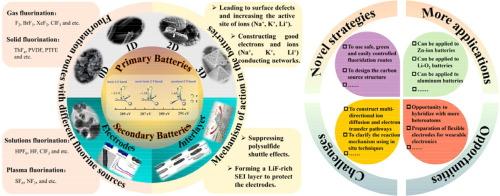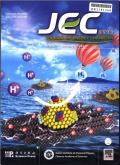Fluoridation routes, function mechanism and application of fluorinated/fluorine-doped nanocarbon-based materials for various batteries: A review
Abstract
With the popularity and widespread applications of electronics, higher demands are being placed on the performance of battery materials. Due to the large difference in electronegativity between fluorine and carbon atoms, doping fluorine atoms in nanocarbon-based materials is considered an effective way to improve the performance of used battery. However, there is still a blank in the systematic review of the mechanism and research progress of fluorine-doped nanostructured carbon materials in various batteries. In this review, the synthetic routes of fluorinated/fluorine-doped nanocarbon-based (CFx) materials under different fluorine sources and the function mechanism of CFx in various batteries are reviewed in detail. Subsequently, judging from the dependence between the structure and electrochemical performance of nanocarbon sources, the progress of CFx based on different dimensions (0D–3D) for primary battery applications is reviewed and the balance between energy density and power density is critically discussed. In addition, the roles of CFx materials in secondary batteries and their current applications in recent years are summarized in detail to illustrate the effect of introducing F atoms. Finally, we envisage the prospect of CFx materials and offer some insights and recommendations to facilitate the further exploration of CFx materials for various high-performance battery applications.


 求助内容:
求助内容: 应助结果提醒方式:
应助结果提醒方式:


